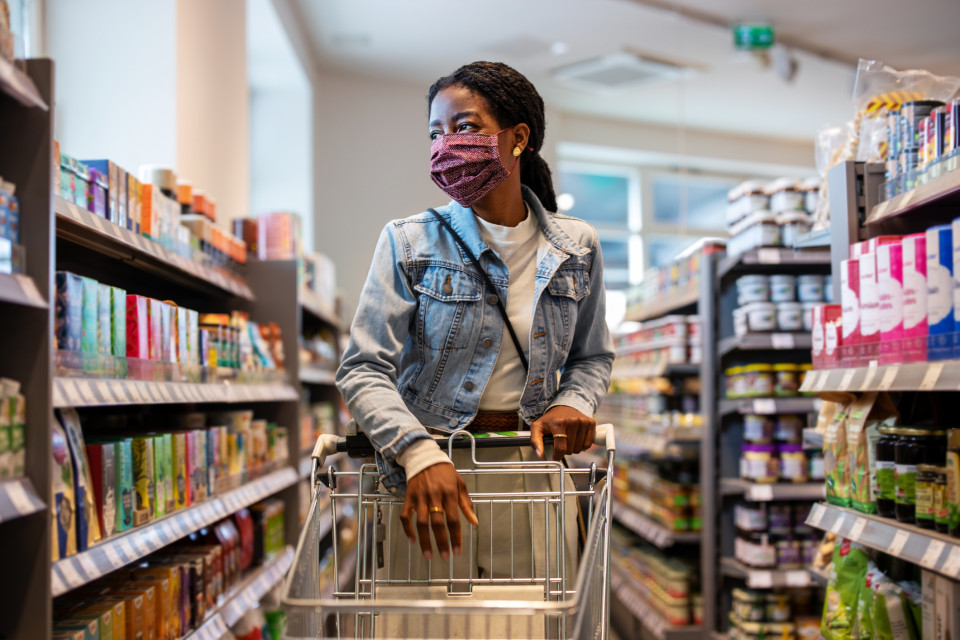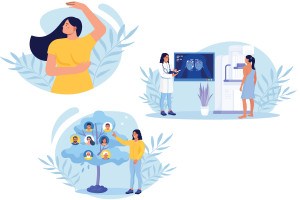5 Ways That a Year of COVID-19 Changed Our Understanding of Philly Forever

It’s painful to write, but the WHO declared COVID-19 a pandemic on March 11, 2020, which means we’re officially about a year living with the virus widespread. While it’s hard not to alternate between, in one moment, dreaming of a day where vaccines make the virus a small or nonexistent part of our lives, and in the next moment, doom-scrolling through reports of variant strains, there is a third way of thinking about our COVID-19 anniversary.
Through the course of the year, the virus has revealed critical, systemic challenges in Philadelphia and the nation—as well as opportunities for growth. 2020 may have been hard, but at least it doesn’t have to be a waste if we gain a new perspective from it.
So, in the spirit of making the best of a tough situation, we spoke to Rich Snyder, chief medical officer at Independence. Each week during the pandemic, he meets with a group of healthcare leaders, including the city’s health commissioner Tom Farley, to help shape medical policy and solutions in Philadelphia. He told us how we can grow from this once-in-a-lifetime challenge.
Inequity
One of the pandemic’s most important effects is making people understand the inequality embedded into the structure of Philadelphia and the nation as a whole.
People who reside in underserved communities are exposed to the virus at a greater rate. In part, this is because income inequality causes people to live and work in closer proximity: essential workers who can’t work from home and people who need to use public transportation are more exposed. But it’s also a matter of living conditions, where people struggling with poverty are often living in smaller, multigenerational homes, and have higher rates of pre-existing chronic illness, which makes the virus much more dangerous.
But the problem extends beyond income. It’s particularly a problem for minority communities: African Americans have higher infection rates, hospitalization rates, ICU rates and death rates than white Americans.
“We started looking at the data in fundamentally different ways, to look at our members who reside in these communities and try to understand the differences in access to care and health outcomes,” Snyder says. What they found was telling: African-Americans access emergency rooms at a higher rate, while receiving fewer specialty care provider visits than white people who live in the same neighborhood. Trust in the healthcare system is lower from decades of mistreatment that continues today, and the vaccination rate of African-American healthcare workers is almost 40% less than white workers.
Even the data can make things harder for underrepresented groups.
“There are inherent biases in the data we use,” Snyder says. For example, data on kidney function tests are routinely adjusted for African-Americans and only African-Americans, which produces a result that makes African-Americans less likely to receive a kidney transplant. After awareness of injustice grew during the pandemic, more hospitals are eliminating that adjustment.
Mental Health
The pandemic has also expanded people’s understanding of what an underserved group is. People suffering from mental health challenges have become a clear population in need.
During the pandemic, 40 percent of U.S. adults identified themselves as struggling with either mental health or substance use disorder. 11 percent of U.S. adults had considered suicide in the prior month when surveyed, and about 13.3 percent started or increased their use of substances.
It’s a widespread problem, but there’s not always a clear dividing line: 92% of employees had somewhere between mild and severe anxiety. Suddenly, the stress of a singular year, of being stuck at home or isolated, facing income or job loss, made a vast proportion of the population understand some of the challenges of mental health for the first time.
Integrated Health
But with some of the key problems revealed, solutions can kick into gear. Snyder points out that mental health in particular could be addressed through an integrated approach to behavioral healthcare and physical healthcare.
Through increasing changes in insurance and legal policy, as well as an understanding of the importance of holistic health, some general practitioners are starting to include psychiatrists and therapists in their offices, so that mental health screenings become just another part of the checkup, right along with your vision and hearing tests.
“You ask a short series of questions and you identify somebody as being at risk or not,” Snyder says. “By having the services integrated into the practice, people can enter through the same front door that they ordinarily go to for their primary care and feel completely comfortable.” In addition to helping the physician keep an eye over the patient’s full set of prescriptions to avoid unhealthy or dangerous combinations, there’s confidentiality and the stigma is reduced significantly.
Virtual Care
The pandemic has raised awareness of the danger of chronic conditions and the fact that individuals suffering from income inequality can struggle to receive healthcare, but it has also provided a technological innovation that could help.
“Telemedicine was underutilized before the pandemic. The percentage of people using it were in the low single digits,” Snyder says. “But due to the developments in response to the pandemic, our claims went from 12,000 telemedicine visits in the prior year, to 1.6 million in 2020.”
This aids people who can’t get off work easily, or who would not normally be able to easily locate a specialty care provider to receive preventive care on, say, a troubling rash (according to Snyder, finding a dermatologist appointment for the first time can take an average of three months). But it also helps individuals with chronic conditions.
Snyder points to the example of patients at risk of heart failure, who can have dozens of hospital visits per year.
“Obviously, we’ve failed as a system to take good care of you in the home setting, if you’re admitted to the hospital because fluid has accumulated in your lungs,” Snyder says. But using digital devices like Bluetooth enabled biometric monitors and remote pulse oximeters, as well as simple text-based checks on symptoms, healthcare providers can actually monitor the patient’s condition from afar, and adjust medication and care accordingly, even on a day-to-day basis. It prevents a hospital visit, and helps make sure the condition doesn’t get worse than it has to.
Community
The pandemic has also taught us that if you want to do a better job at helping disenfranchised communities on health issues, you have to actually reach out to them, and let them take the lead.
Snyder points to Independence’s support of the Black Doctors COVID-19 Consortium, which they have donated to monetarily but also work with them to address the issue of getting tests and vaccinations out into the community.
They also support the increasing adoption of mobile healthcare units in being able to reach the Latino community. By bringing testing and education into underserved neighborhoods, you avoid making them take off work hours or being away from caring for dependents, while adding a measure of trust. It’s part of a larger trend of healthcare providers and activists working with community partners to meet communities where they’re at. For example, Snyder has seen a higher rate of engagement when providers distribute education or healthcare at places of worship, grocery stores and other community centers.
“It shows that hesitancy is contextual, right? It’s in the eyes of the recipient,” Snyder says. “It’s different than if it’s somebody you don’t know. We need to go where people live, where they pray, and where they get their groceries and meet them on their terms.”
This is a paid partnership between Independence Blue Cross and Philadelphia Magazine

